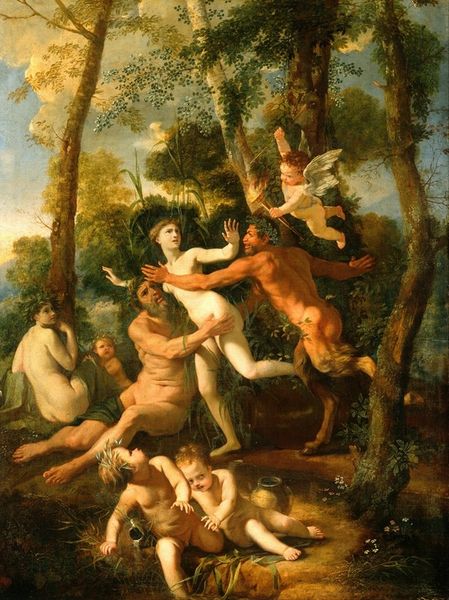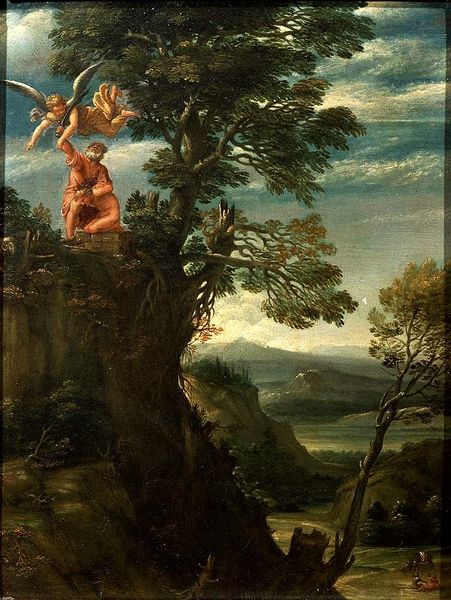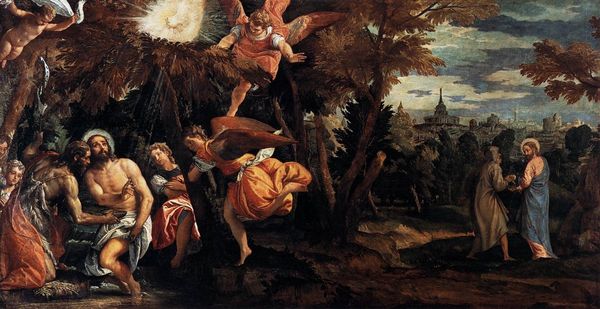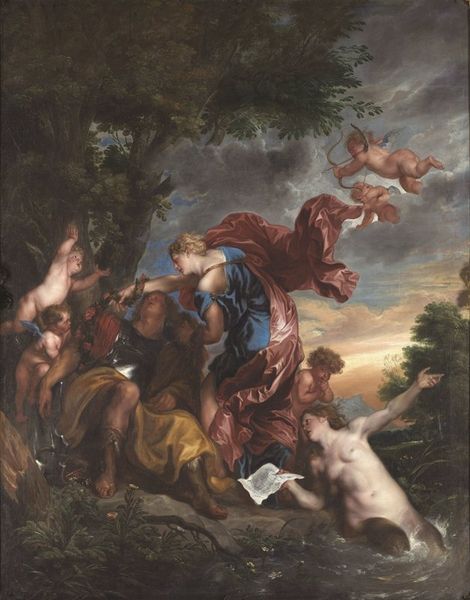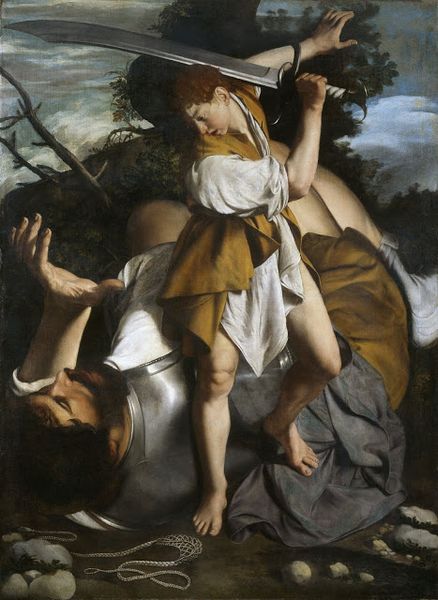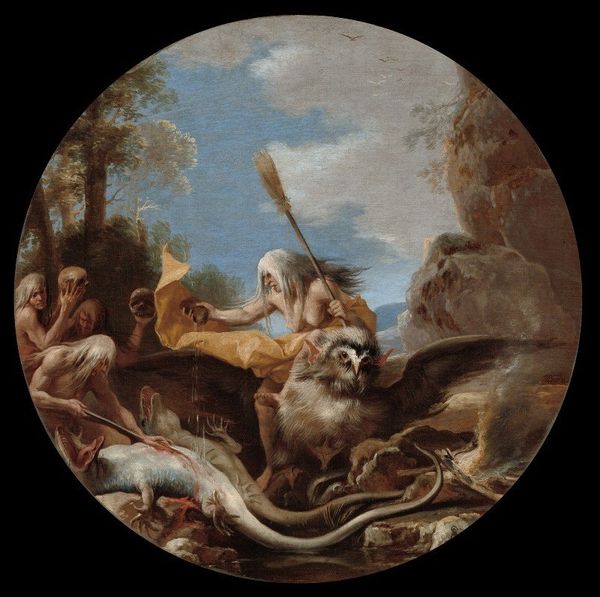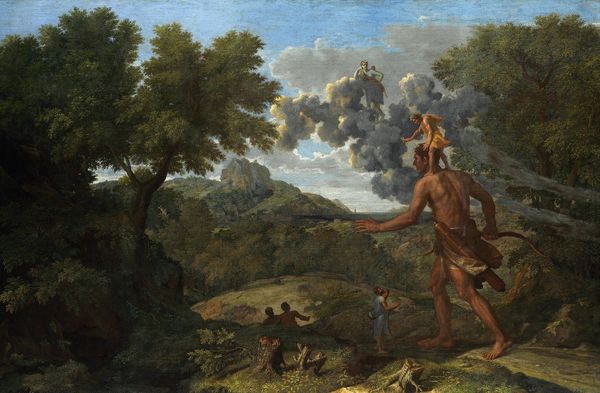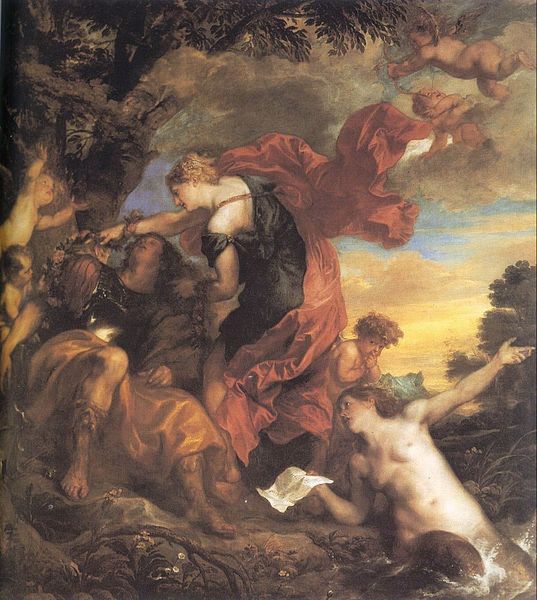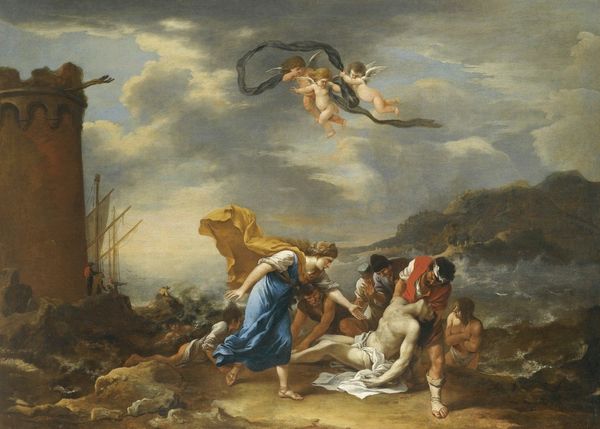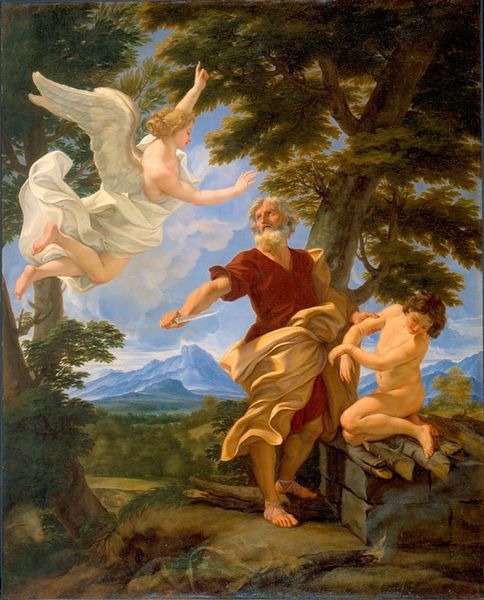
Copyright: Public Domain: Artvee
Curator: Here we have Théodore Géricault’s "The Martyrdom of St. Peter," an oil painting from 1814. What strikes you immediately? Editor: The overall impression is violently disruptive! The chaotic positioning of the figures coupled with the shadowy forest evokes emotional unease. What symbolic gestures amplify this sense of disorder? Curator: Note the almost performative cruelty in the executioner's stance and gaze; he is an agent, willingly committing a ritualistic murder. But there’s something more too—above, almost divorced from the gruesome scene below, the angels suggest the possibility of redemption. The dichotomy speaks volumes. Considering Gericault was an expert marksman it’s likely the killer is idealized based on the athletic strength associated with those skilled marksman who supply the tools of war, expanding Gericault's critique of exploitation to divine dimensions. Editor: So, how does Géricault use material and the historical context of production to enhance meaning, here? Was he perhaps responding to the politics of his time by painting this? Curator: Yes, absolutely! The early 19th century witnessed monumental social upheaval with the Napoleonic wars. I suggest Gericault had to create a product which fit the French's ideal heroic figures; using Saint Peter became the ultimate propaganda piece with an appeal to faith. Furthermore, oil paint itself facilitated these dramatic, almost theatrical effects. Gericault carefully utilizes glazing to create tonal range within Peter's dead skin. The application isn't merely representation; it's part of the story's emotional weight. Editor: The cherubs, though common in religious iconography, strike a jarring contrast with the harsh scene beneath. Were these types of visual and iconographic combinations typical during that period? Curator: Géricault aimed to challenge artistic convention. Consider also the dynamic and contrasting arrangement. The executioner takes the full, raw violence to a disturbing scene for social change using the tools for the divine will to do good for everyone. It creates an image ripe with layered interpretations. Editor: An extremely intriguing piece that pushes the boundaries of both iconographic and social critique. Curator: Indeed. Géricault challenges us to really think about art’s productive capabilities.
Comments
No comments
Be the first to comment and join the conversation on the ultimate creative platform.
